Research & Experiments
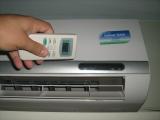 | Reverse Engineering a Fidji Air Conditioning IR Remote Control
No matter how hard i searched (though searching is not my best ability), i could not find detailed documentation regarding Air-conditioning IR remote control protocols. So i decided to reverse-engineer the remote control of my Fidji air condition, since i need this info for a future project that i prepare...
|
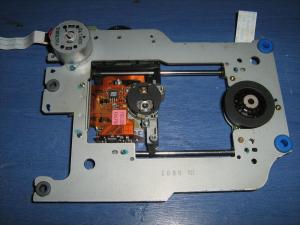 | Reverse-Engineering the Linear Guide of a DVD Head
I plan to make a coil-winding machine, and so i needed a stacker mechanism. Inside a PC DVD player, there is a nice 35mm stroke linear guide with a precision moving mechanism, perfect for my needs. The problem is that i did not know how this works, and so i did what i do best: I reverse engineered it to find out how it works.
|
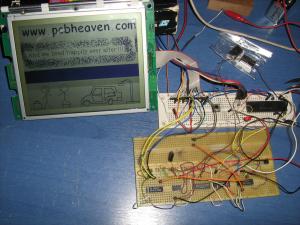 | Reverse-Engineering an LCD Display
I have more fun reverse-engineering something, rather than making it from a scratch. I had an LCD on my hands, with absolutely no information or datasheet available whatsoever, but i badly needed to make it work.
|
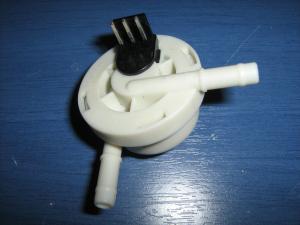 | Experimenting with a Liquid Flow Sensor
A friend of mine (thanks Siv) gave me this flow sensor. it comes from a professional (and expensive) household apparatus. It is proper for drinking water and can be connected directly to the water supply. It has a built in controller that provides pulses. With this experiment i will find the pulse counts for a specific amount of water.
|
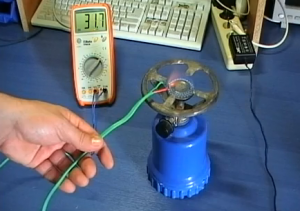 | Experimenting with Thermocouples
I run some experiments with a pair of K-type thermocouple wire. The purpose is to see how the thermocouple junction behaves, as well as to have fun with it by measuring some high temperatures!
|
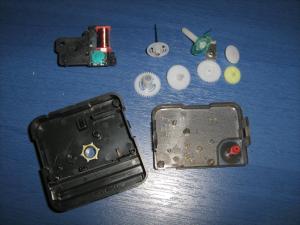 | Wall Clock Accurate Oscillator Hack
This experiment has to do with the ordinary Chinese wall clock mechanisms. At first, i try to find out how the brilliant mechanism operates. Then, i make an accurate oscillator for my projects out of this clock, and with this oscillator i make a.... LED flasher...
|
 | Hacking a Pioneer Car Cassette Player
As i am a radio fan, i wanted to embed a radio player on my PC cabinet control panel. Making a radio on my own would require quite a long time. Thus, i used an old car radio cassette player that i had graved. In this chop-job i hack the face-off connector of the player, so that i can get all the info displayed on it's built-in ugly orange LCD, and display it on my own neat displays.
|
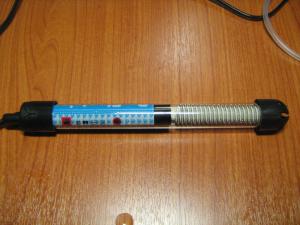 | Removing the built-in thermostat of an aquarium heater
Most submersible aquarium heaters -like this one- have a built-in thermostat to maintain the tank water at a temperature proper for the fish to live in. Unfortunately, this temperature is too low for etching solutions. This particular heater is brought in the chop-shop for a fine operation of removing the built-in thermostat.
|
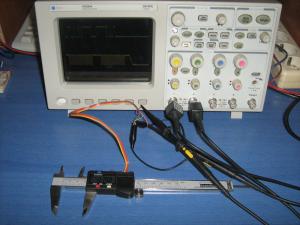 | Digital Caliper Protocol
All digital calipers have a communication port built-in, so that it can be interfaced with a PC or a remote LCD screen. The purpose of this experiment is to identify the port pins and try to read the protocol of the caliper. Two experiments will take place, using two different calipers, so that both the BCD and Binary data transmission protocol is covered.
|
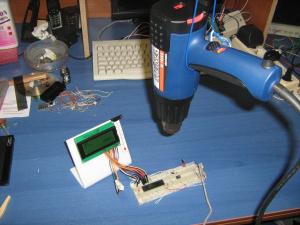 | Experimenting with a thermistor
Recently i won a bid for a batch of 10K thermistors. The only thing that i knew when i got them in my hand, was that those things are 10K thermistors. As far as i know, the 10K nominal resistance is at room temperature. But i had to find out if these are PTC or NTC, and also i had to draw their resistance to temperature characteristic line, otherwise they would be useless to me. So i ran some experiments with them...
|
|

 Home
Home
 Projects
Projects
 Experiments
Experiments
 Circuits
Circuits
 Theory
Theory
 BLOG
BLOG
 PIC Tutorials
PIC Tutorials
 Time for Science
Time for Science
 Contact
Contact
 Forum
Forum
 Projects
Projects
 Experiments
Experiments
 Circuits
Circuits
 Theory
Theory
 BLOG
BLOG
 PIC Tutorials
PIC Tutorials
 Time for Science
Time for Science
 RSS
RSS